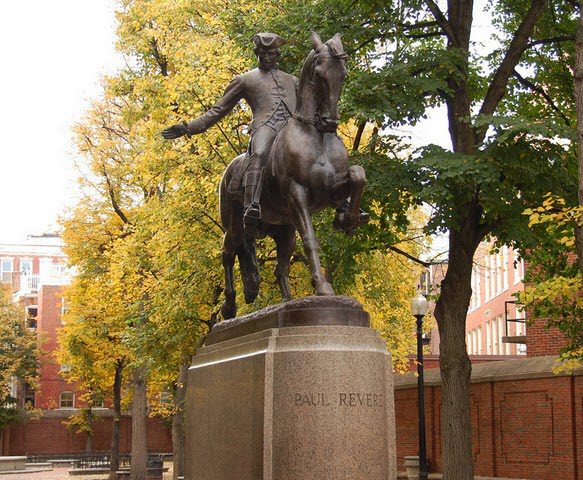I have always believed that legends are ‘made’, not ‘born’.
It is in fact the moment to moment responses we make to the pressures of life that are molding what type of legacy we will leave behind.
And make no mistake my friend, we all will leave some sort of legacy.
We will be remembered either by the problems we help solve or the ones we create.
This is why each day should be lived to its fullest potential.
You never know what tomorrow will bring.
One such man who lives in the annals of time and history accredits to single handedly warning Boston of pending danger during the American Revolution is Paul Revere. I’m sure we all recall the history classes where we learned of that night in April 1775 when Revere took off on his fastest horse to blaze a trail up the countryside yelling ‘The British are coming, the British are coming’! It was probably one of the most successful mass marketing plans we will ever see. Well into the midnight hour Revere was able to spread a message that eventually turned into a rally cry. What many do not realize is that Paul Revere was not alone. He was accompanied by a fellow rider named William Dawes. But why did history seemingly write out a key player who was just as responsible for America’s safety as Revere? I think the answer lies in Revere’s ability to market himself, build a network and secure a legacy.
Both men received their orders at the same time from Dr. Joseph White to ride from Boston to Lexington and get to the homes of both John Hancock and Samuel Adams. Both men had passion for the message they were tasked to take. And both men knew the weight and responsibility of that message. The difference was nothing that could be seen externally. Their difference was in the ability to connect with others. Dawes was known to be a bit prudish while Revere was commonly known for his social life and quite honestly, his indulgence with gambling. This would have put him in the public circle more often than Dawes.
Here are a couple of key things we can take away from Paul Revere to ensure we are not written out of our legacy:
• Paul Revere was a person who was not afraid to get out into the public and mix things up: We live in a society that is quickly losing its touch on community. We would rather email than call, to text than dialogue. For many, social media has become the only means of communication with a great big world out there. In a real community, you need to get up from the computer and meet people face to face. Real life leads to credibility and synergy. I love my iPad, but never forget there is no substitute for knowing humans in ‘real life’.
• Paul Revere was able to borrow a horse to help him spread the message: Why is this important? Because Paul was able to tap the resources of his network to acquire the fastest horse possible. His good friend, Deacon John Larkin made sure he had a solid horse to ride. Larkin made sure Revere, who is rumored to have not even owned a horse, was able to make the 20 mile trek as quickly as possible. This reveals that no matter what you lack, a powerful network is really the only thing you need.
• Paul Revere leaned on his relationships with others to make his mission a success: I believe that every human being deep down is waiting for an opportunity to step up. Greatness is just lurking there under the surface itching to be released. So Revere gave them such an opportunity. With only half his journey complete, he stopped at the home of Isaac Hall to make sure the captain of the Minute Men was alerted and would in turn, prepare the troops.
William Dawes died in 1799 and by many, had a successful life. He was a husband, father and solider. But when the famed poem by Henry Wadsworth Longfellow was published, his name was absent. Only Revere was mentioned. By most accounts, that is unfair. However, Revere is clearly seen as the networker of the two. He was able to leverage relationships to his best advantage. And for this, history will always celebrate him as a legendary figure. As you begin this New Year, what will be the lasting memory you leave with those around you?
See you at the TOP!
Early Jackson
Photo Credit: Roshan Vyas
